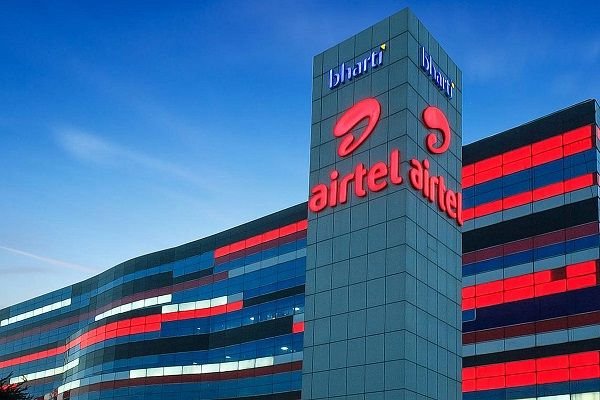Bharti Airtel Ltd. is a leading global telecommunications company with a robust presence across Asia and Africa. The company ranks among the top three mobile service providers globally in terms of subscriber base. In India, Bharti Airtel’s diverse product portfolio includes 2G, 3G, and 4G wireless services, mobile commerce, fixed-line services, high-speed home broadband, DTH (Direct-to-Home) services, and enterprise solutions. The company also provides national and international long-distance services to carriers. Across its global operations, Bharti Airtel offers 2G, 3G, and 4G wireless services and mobile commerce solutions.
The company’s innovative approach and consistent focus on expanding its technological capabilities have established it as a market leader in the telecom industry. With an ever-growing subscriber base, Airtel continues to innovate and deliver cutting-edge solutions to meet the evolving demands of its customers.
The company’s commitment to sustainability is another pillar of its success, with several green initiatives and renewable energy projects integrated into its operations. Its extensive global partnerships further strengthen its competitive edge, ensuring high-quality service delivery.
Performance Overview
Bharti Airtel has demonstrated impressive growth across multiple timeframes, reflecting its operational strength and market leadership. Below are the highlights of its performance metrics:
Stock Performance
| Time Period | Performance (%) |
|---|---|
| 1 Day | ▲4.4% |
| 1 Week | ▲4.1% |
| 1 Month | ▲8.1% |
| 6 Months | ▲16.9% |
| 1 Year | ▲69.0% |
| 2 Years | ▲103.0% |
| 5 Years | ▲290.8% |
| 10 Years | ▲436.5% |
Bharti Airtel’s long-term returns highlight its consistent growth trajectory, making it a preferred choice for investors. Its stock has significantly outperformed benchmark indices, driven by robust financial performance, strategic partnerships, and a focus on innovation.
Financial Metrics
- Enterprise Value (EV): ₹11,58,093 crore
- Earnings Per Share (EPS): 20.15
- Price-Earnings (P/E) Ratio: 83.48
- Book Value Per Share: 143.45
- Price to Book Value: 11.73
- Dividend Yield: 0.48% (as of March 2024)
- PEG Ratio: 2.13
- Shares Subscribed: 608.81 crore
- Face Value: ₹5
These metrics underscore Airtel’s strong financial position and growth potential in the telecom industry. The company’s PEG ratio of 2.13 reflects balanced growth relative to earnings, further enhancing its attractiveness as a long-term investment.
Technical Analysis

Bharti Airtel’s technical indicators present a mix of momentum and trend-based signals. The data supports a near-term bullish outlook, though overbought conditions suggest caution.
Momentum Indicators:
| Indicator | Value | Interpretation |
| Relative Strength Index (Daily) | 63.85 | Neutral |
| Relative Strength Index (Weekly) | 62.43 | Neutral |
| Commodity Channel Index | 178.59 | OverBought |
| Money Flow Index | 46.05 | Neutral |
| Rate Of Change | 6.60 | Positive |
| Stochastic %K | 68.51 | Neutral |
| William %R | -2.43 | OverBought |
Trend Indicators:
| Indicator | Value | Interpretation |
| Average Directional Index | 19.46 | RangeBound |
| Moving Average Convergence/Divergence | 5.19 | Positive |
| 50-Day Moving Average (SMA) | 1622.83 | Above Current Price |
| 200-Day Moving Average (SMA) | 1451.48 | Strong Support |
Volatility Indicators:
| Indicator | Value | |
| Average True Range (ATR) | 39.71 | |
| Bollinger Band Width | 0.10 | |
| Bollinger Band %B | 1.11 | |
| Historical Volatility (1-Month) | 18.25 | |
| Beta | 0.88 | Lower than Market Volatility |
Relative Strength:
| Benchmark | 21 Days | 55 Days | 21 Weeks |
| Relative Strength Benchmark Index | 0.04 | 0.00 | 0.14 |
| Static Relative Strength | 0.12 | Positive | |
| Adaptive Relative Strength | 0.53 | Positive | |
| Relative Strength Sector Index | -0.04 | Negative |
Support and Resistance Levels:
- Immediate Support: ₹1648 (50-Day EMA)
- Key Support Zone: ₹1587 (Lower Bollinger Band)
- Immediate Resistance: ₹1685 (Recent High)
- Major Resistance Zone: ₹1785 (Upper Bollinger Band, Historical High)
Insights from the Chart:
- Price Action: The stock recently broke out above the Bollinger Band mid-line, signaling renewed bullish momentum. Sustaining above ₹1680 will strengthen the uptrend.
- Volume Analysis: High trading volumes accompanying the recent price breakout indicate strong investor interest.
- RSI Analysis: The RSI near 63 suggests the stock is approaching overbought territory but still has room for upward movement.
- MACD Divergence: The MACD line crossing above the signal line further reinforces the bullish sentiment.
- Bollinger Bands: A widening Bollinger Band reflects increasing volatility, suggesting potential for larger price swings in the near term.
Summary of Technical Outlook:
- Bharti Airtel is currently in an upward trend, supported by strong technical indicators. The stock shows potential for further upside if it sustains above ₹1685 and breaks the ₹1785 resistance level. However, investors should monitor overbought indicators, as a correction might follow if upward momentum stalls.
Fundamental Analysis
Bharti Airtel’s financial health is supported by robust revenue streams and efficient operations:
Income Statement Highlights:
| Metric | Value (₹ crore) |
| Net Sales | 41,473.30 |
| Expenditure | 19,627.10 |
| EBITDA | 21,846.20 |
| Other Income | 254.70 |
| Depreciation | 11,000.00 |
| Interest | 5,423.70 |
| Exceptional Items | -853.70 |
| Profit Before Tax (PBT) | 4,823.50 |
| Tax | 1,744.00 |
| Net Profit | 3,079.50 |
| Consolidated Net Profit | 3,593.20 |
Key Ratios:
| Ratio | Value (%) |
| Return on Equity (ROE) | 10.75 |
| Return on Capital Employed (ROCE) | 14.81 |
| Return on Assets (ROA) | 2.01 |
| PBIDT Margin | 53.16 |
| PAT Margin | 5.71 |
| Dividend Payout Ratio | 61.64 |
Efficiency Ratios:
| Metric | Value |
| Asset Turnover Ratio | 0.35 |
| Inventory Turnover Ratio | 482.65 |
| Debtors Turnover Ratio | 34.44 |
| Days of Receivables | 10.60 |
| Days of Payables | 3,120.12 |
| Working Capital Cycle | -3,108.76 |
Solvency Ratios:
| Metric | Value |
| Total Debt to Equity Ratio | 1.86 |
| Total Debt to Assets (%) | 35.72 |
| Interest Coverage Ratio | 1.56 |
| Current Ratio | 0.42 |
| Quick Ratio | 0.42 |
Detailed Analysis:
- Revenue Growth: Bharti Airtel’s revenue performance is underpinned by consistent growth in its telecom and digital services segments. The diversification across geographies and service portfolios provides a steady and predictable revenue stream.
- EBITDA Margin: With a margin of 53.16%, Airtel’s operational efficiency is evident, supported by cost optimization measures and economies of scale.
- Net Profit: While Airtel has faced challenges with high depreciation and interest expenses, its consistent revenue and EBITDA growth have offset these pressures, leading to a consolidated net profit of ₹3,593.20 crore.
- Debt Management: A debt-to-equity ratio of 1.86 highlights a leveraged balance sheet; however, the company’s robust cash flows and high-interest coverage ratio reflect its ability to manage debt effectively.
- Asset Utilization: The company’s asset turnover ratio of 0.35, though moderate, reflects efficient utilization of its extensive network and infrastructure assets.
The combination of strong margins, efficient operations, and effective debt management positions Bharti Airtel as a financially resilient player in the telecom sector.
Peer Comparison: Bharti Airtel and Competitors
To understand Bharti Airtel’s positioning in the telecom sector, a peer comparison was conducted. The metrics analyzed include Price-to-Book (P/B) ratio, Price-to-Earnings (P/E) ratio, Dividend Yield, Last Traded Price (LTP), and Market Capitalization.
| Company | P/B Ratio | P/E Ratio | Dividend Yield (%) | LTP (₹) | Market Capitalization (₹ Cr) |
| Bharti Airtel (BHARTIARTL) | 11 | 83.48 | 0.48 | 1681.75 | 1,02,399.46 |
| Vodafone Idea (IDEA) | -0.59 | 0.00 | 0.00 | 7.99 | 55,690.15 |
| Tata Communications (TATACOMM) | 29.51 | 56.65 | 0.91 | 1840.95 | 52,464.22 |
| Tata Teleservices (TTML) | -0.84 | 0.00 | 0.00 | 85.31 | 16,673.58 |
| RailTel Corporation (RAILTEL) | 7.49 | 54.17 | 0.65 | 440.85 | 14,137.34 |
Key Insights:
- Market Capitalization: Bharti Airtel leads in market capitalization with ₹1,02,399.46 crore, showcasing its dominance in the sector.
- P/B Ratio: Tata Communications (29.51) and RailTel (7.49) surpass Airtel’s P/B ratio of 11, indicating a higher valuation per book asset for those companies.
- P/E Ratio: Bharti Airtel’s P/E ratio of 83.48 is significantly higher than its peers, signaling higher investor expectations but potentially overvaluation.
- Dividend Yield: Tata Communications provides the highest dividend yield (0.91%), followed by Bharti Airtel (0.48%).
- Stock Performance: Airtel’s LTP of ₹1681.75 shows strong stock performance, but Tata Communications is slightly higher at ₹1840.95.
This comparison illustrates Bharti Airtel’s strong market presence and highlights areas where it stands out or lags behind competitors.
Growth Analysis
Bharti Airtel has shown consistent growth in revenue and EBITDA over the years. Below are growth highlights:
Growth Ratios:
| Metric | 1 Year (%) | 3 Years (%) | 5 Years (%) | 10 Years (%) |
| Net Sales | 7.79 | 14.23 | 13.17 | 5.74 |
| EBITDA | 5.86 | 19.94 | 25.08 | 10.89 |
| Net Profit | 22.97 | 3.61 | 39.21 | 15.77 |
| Earnings Per Share (EPS) | -11.77 | — | — | — |
These growth trends underline Bharti Airtel’s ability to adapt and expand its market share while maintaining operational excellence.
Industry Position and Competitive Advantage
Bharti Airtel operates in a highly competitive telecommunications industry. Despite intense competition from Reliance Jio and Vodafone Idea, Airtel has maintained its leadership position due to the following factors:
- Technological Edge
- Airtel’s early adoption of 4G and its aggressive rollout of 5G networks have given it a significant edge over competitors. Partnerships with global leaders like Ericsson and Nokia further enhance its technological capabilities, ensuring superior service quality.
- Its investment in advanced technologies like AI-driven network optimization and low-latency 5G ensures seamless connectivity, meeting the demands of both consumer and enterprise customers.
- Diverse Service Portfolio
- Airtel’s product offerings cater to a broad spectrum of customers, ranging from individual users to large enterprises. The inclusion of DTH, fixed-line broadband, and mobile commerce solutions makes it a one-stop solution for communication and digital needs.
- The company’s enterprise services, including cloud and cybersecurity, are becoming key revenue contributors, aligning with the increasing demand for digital transformation solutions.
- Global Presence
- With operations in 18 countries across Asia and Africa, Airtel enjoys diversified revenue streams, reducing reliance on any single geography. Its strategic presence in high-growth emerging markets provides a competitive advantage over regional players.
- Airtel Africa continues to contribute significantly to its financial performance, driven by increasing mobile penetration and the rising popularity of mobile money services.
- Financial Strength
- Airtel’s financial discipline is evident in its consistent improvement in debt metrics and strong cash flow generation. The company’s ability to attract global investments underscores its credibility and long-term growth potential.
- Its favorable credit ratings and access to global capital markets ensure ample funding for growth initiatives, including 5G expansion and digital platform development.
- Customer-Centric Approach
- Airtel’s focus on delivering superior customer experiences through enhanced network quality, competitive pricing, and value-added services strengthens its brand loyalty.
- Initiatives like Airtel Thanks and bundled service offerings have significantly increased customer retention and average revenue per user (ARPU).
- Sustainability and ESG Commitment
- Airtel’s commitment to green energy and reducing carbon emissions aligns with global ESG (Environmental, Social, and Governance) standards. This not only enhances its corporate reputation but also attracts ESG-focused investors.
- The company’s focus on renewable energy in its operations and the promotion of digital financial inclusion through Airtel Money are further solidifying its position as a responsible corporate leader.
Future Outlook
Bharti Airtel’s future prospects appear promising, supported by the following growth drivers:
- 5G Expansion
- The company is heavily investing in its 5G infrastructure, enabling ultra-fast connectivity and unlocking new business verticals like industrial IoT, autonomous vehicles, and smart cities. The enterprise segment is expected to significantly benefit from these developments, boosting revenues and market share.
- Digital Transformation
- Airtel’s initiatives, such as Airtel Xstream and Glance TV, are at the forefront of its digital transformation strategy. These platforms aim to increase customer engagement and enhance ARPU (Average Revenue Per User) by offering tailored content and premium services. Investments in AI-driven analytics and personalized marketing will further strengthen customer loyalty.
- Strategic Partnerships
- Airtel’s collaborations with technology giants like Ericsson, Nokia, and global OTT platforms ensure superior service quality and diversified offerings. The partnerships aim to create a robust digital ecosystem that integrates telecommunication services with entertainment, cloud computing, and enterprise solutions.
- Africa Operations
- Airtel Africa remains a growth powerhouse, driven by increased mobile penetration and the rising popularity of Airtel Money. Expanding the mobile money platform intonew regions will drive financial inclusion and revenue growth. Africa’s underserved market presents immense opportunities for long-term scalability. The company’s focus on rural and semi-urban areas with cost-effective solutions strengthens its foothold in these high-potential markets.




